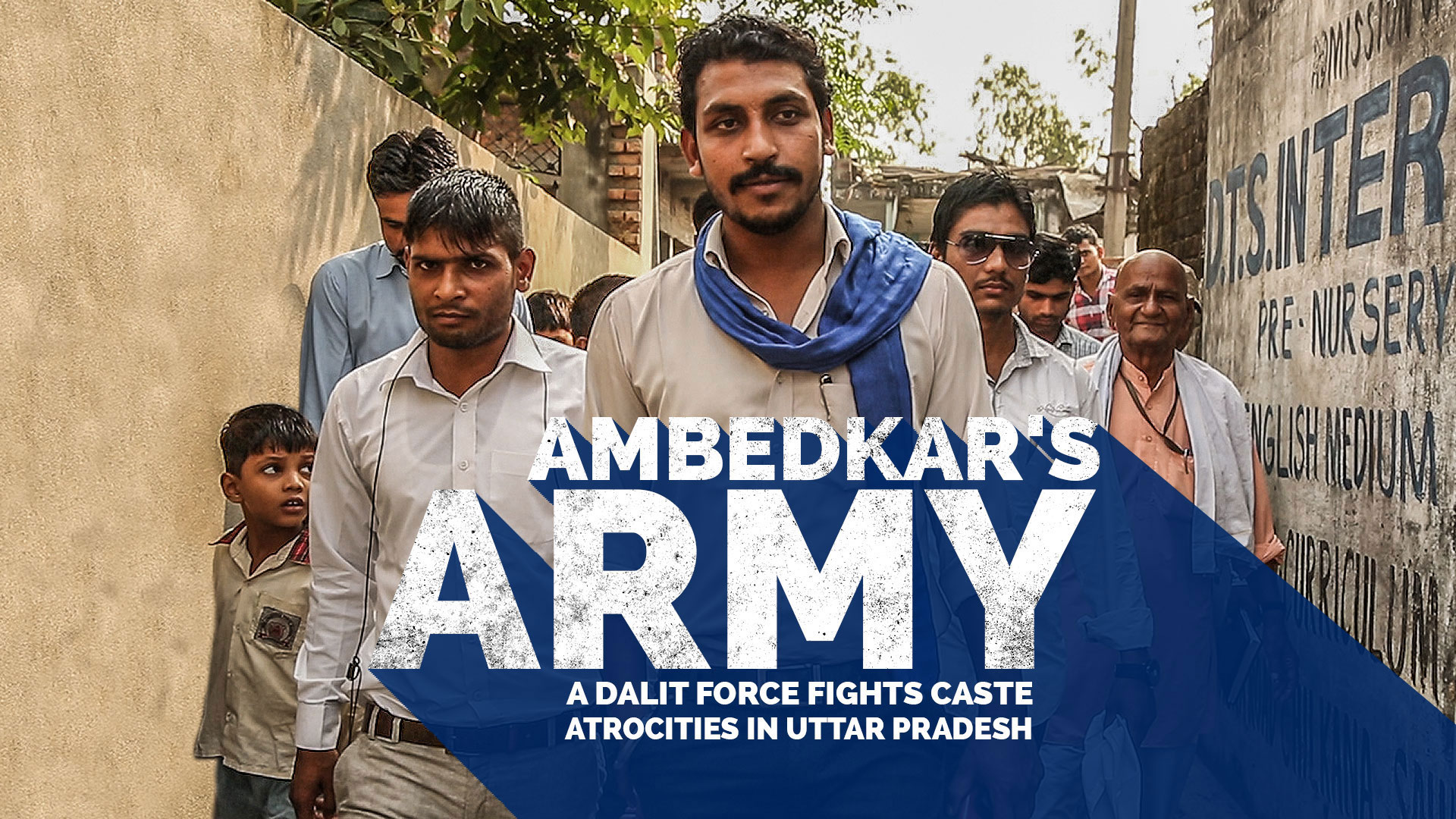
The Hindutva winds of Gorakhpur are being stopped by Dalit walls in Saharanpur. The wind had attained significant force through installation of Yogi Adityanath as the Chief Minister of Uttar Pradesh. This is being stalled by Dalit led Bhim Army at Saharanpur.
Goraknath has been a center of Political activity, particularly the Hindutva brand of politics. Gorakhpur has attained the status of ‘saffron citadel’. Gorakhnath Mutt had produced Mahants, who participated and took ahead the Hindutva agenda. Mahant Digvijay Nath joined Hindu Mahasabha in 1937 and spearheaded Ram Janam Bhoomi movement in 1949. Mahant Avaidyanath was earlier Hindu Mahasabha president and won in 1991 and 1996 on BJP ticket. Yogi Adityanath has been the MP from Gorakhpur since 1998. He formed the Hindu Yuva Vahini. The group has been involved in communal activities such as Mau riots and Gorakhpur riots. He is also well known for his hate and inflammatory speeches. Saraswati Shishu Mandirs known for its inculcation of Hindutva at a very young age had its beginnings from here.
Gorakhpur also happens to be the place where Gita Press is located. This press is the largest publisher of Hindu religious books and was started in 1923 by Jaya Dayal Goyandka for promoting the principles of Sanatana Dharma. At first glance, it appears a mere publisher of book on religion and promoting spiritualism. In the book titled Gita press and the making of Hindu India the author describes how the publishing house went on to promote the idea of a Hindu India and the idea of Islamophobia and Cow protection. In the words of Akshaya Mukul the author of the book, Gita Press “was a political project, a convenient tool of Hindu right groups like Hindhu Mahasabha, Rashtriya Swayam Sevak Sangh, Jana Sangh and other organizations like Ram Rajya Parishad”. Gita Press was at the forefront for the demand of Hindu Nation since the 1930s. In its magazine during 1930’s and the 40’s it spread message of hatred against Muslims, Dalits and Educated women. Post 1947, it also spoke of an Indian army not having Muslim and having an exclusive Hindu militia.
With the advent of Yogi Adityanath as Chief Minister of Uttar Pradesh, Gorakhpur has been in the news. The Hindutva roots of Gorakhpur are being pushed under his Chief Ministership. GauRakshaks and Hindu YuvaVahinis are having a free reign. This has not gone without any resistance. In the garb of imposing a common religious identity, Hindutva agenda marginalizes sections and also creates its own seeds of resistance. This is seen in the form of Dalit resistance. The efforts to impose Hindutva and upper caste symbols and marginalizing dalit symbols have been met with resistance.
Saharanpur is recently in the news particularly for its resistance to imposition of this caste supremacy in the name of religion. Post Mandalisation process in India had led to decline of upper caste political supremacy in Uttar Pradesh. The political power remained in the hands of OBCs and Dalits in the form of Samajwadi Party and Bahujan Samaj Party. The advent of BJP by cutting into this vote bank and emergence of Adityanath, a Thakur and also a proponent of Hindutva had led to resurgence and efforts in establishing upper caste supremacy. This was also the reason for recent clashes between Thakurs and Dalits.
In the process of re-establishing their upper caste supremacy, on the one hand the efforts of Dalits to install the statue of Ambedkar were attacked. Similarly, a rally was carried out to install the statue of Maharana Pratap Singh, a symbol of Rajputs. The rallies were carried out in Dalit locations and were opposed by Dalits. Dalit houses were attacked. While BJP is trying to re-establish upper caste supremacy in the name of Hindutva, this is being equally resisted by Dalits. According to SudhaPai, “Dalits have shown unity and closed ranks when attacked by Upper Caste”.
Emergence of Bhim army in Saharanpur is a reflection of this resistance to imposition of Hindutva. Bhim army began as a WhatsApp group of pro-Dalit thinkers and went on to mobilize thousands against atrocities by upper castes. Started by Chandrashekhar, he had earlier stood against upper caste supremacy and discrimination in a college and opposed installation of provocative anti-dalit signboards in Ghadkoli village. According to Chandrashekar Azad, “the aim of Bhim army is to make west Uttar Pradesh atrocity free in one year”. It has about 350 patshalas. Members of Bhim Army recently led a mass protest in Delhi on May 22nd. More than 50,000 participated in the rally. The gathering of all Dalits was described as that of against “Saffron Terrorism”. According to Chandrashekar, the spearhead of Bhim Army, “I won’t accept turban until saffron terrorism is not wiped out”.
While the Saffron forces are trying to impose its brand of religious supremacy, it is laying the seeds of its own destruction. The UNA march, the march to Delhi by Bhim army is only pointers of things to emerge.
Despite the resistance, the threats of the saffron forces are however far from over. While resistance based on identity formations are definitely needed to fight against imposition of a cultural, caste or religious supremacy, identity based resistance comes with its own limitations. While alliance among specific identities such as Dalits, Muslims, Adivasis are needed to resist Saffron threat, a resistance based on a broader alliance which is beyond identity formations is the need of the hour.
T Navin works in an NGO as a Researcher. He did his M.Phil from Jawaharlal Nehru University (JNU).










































